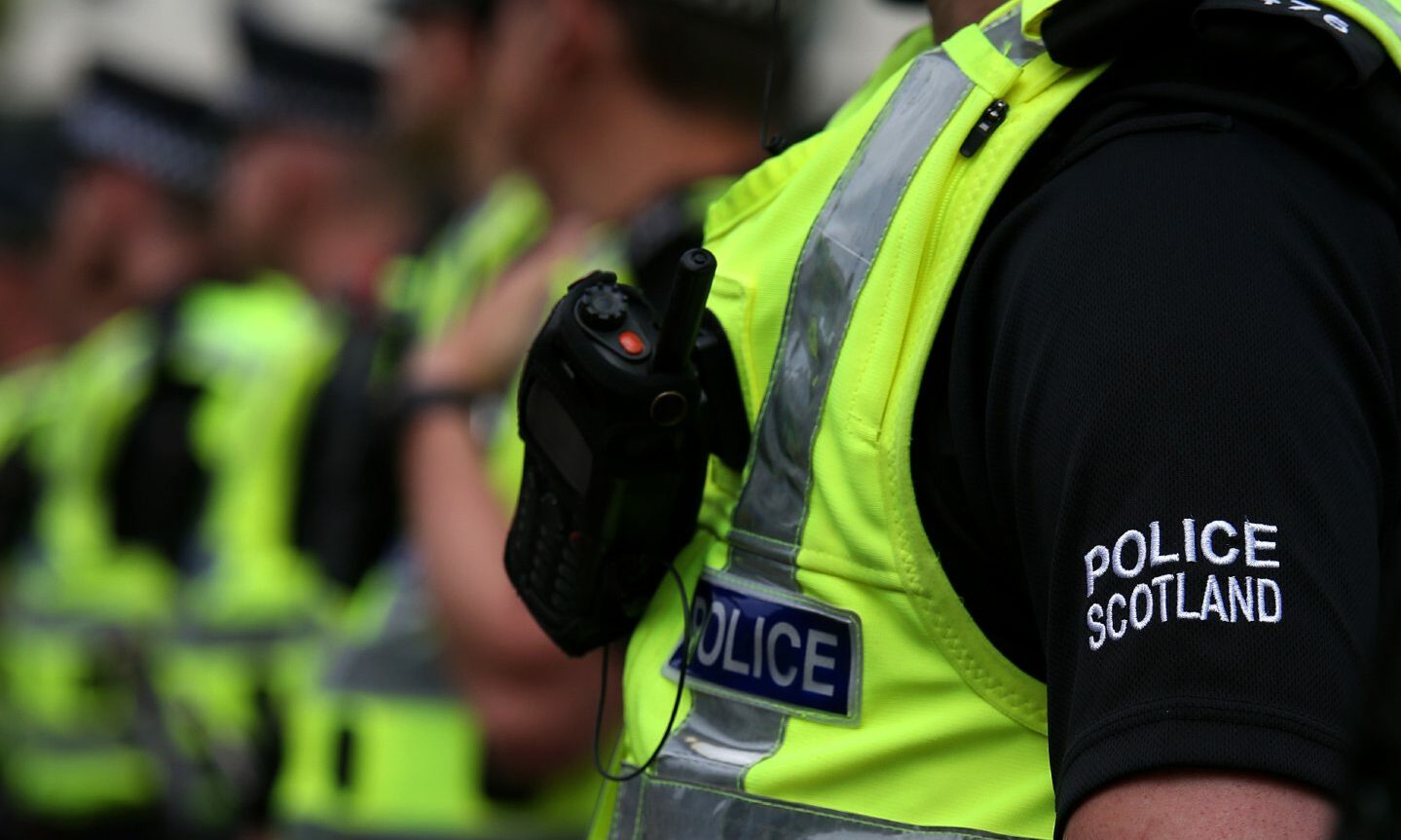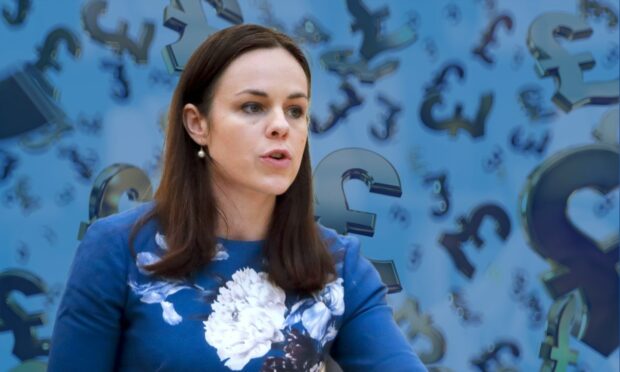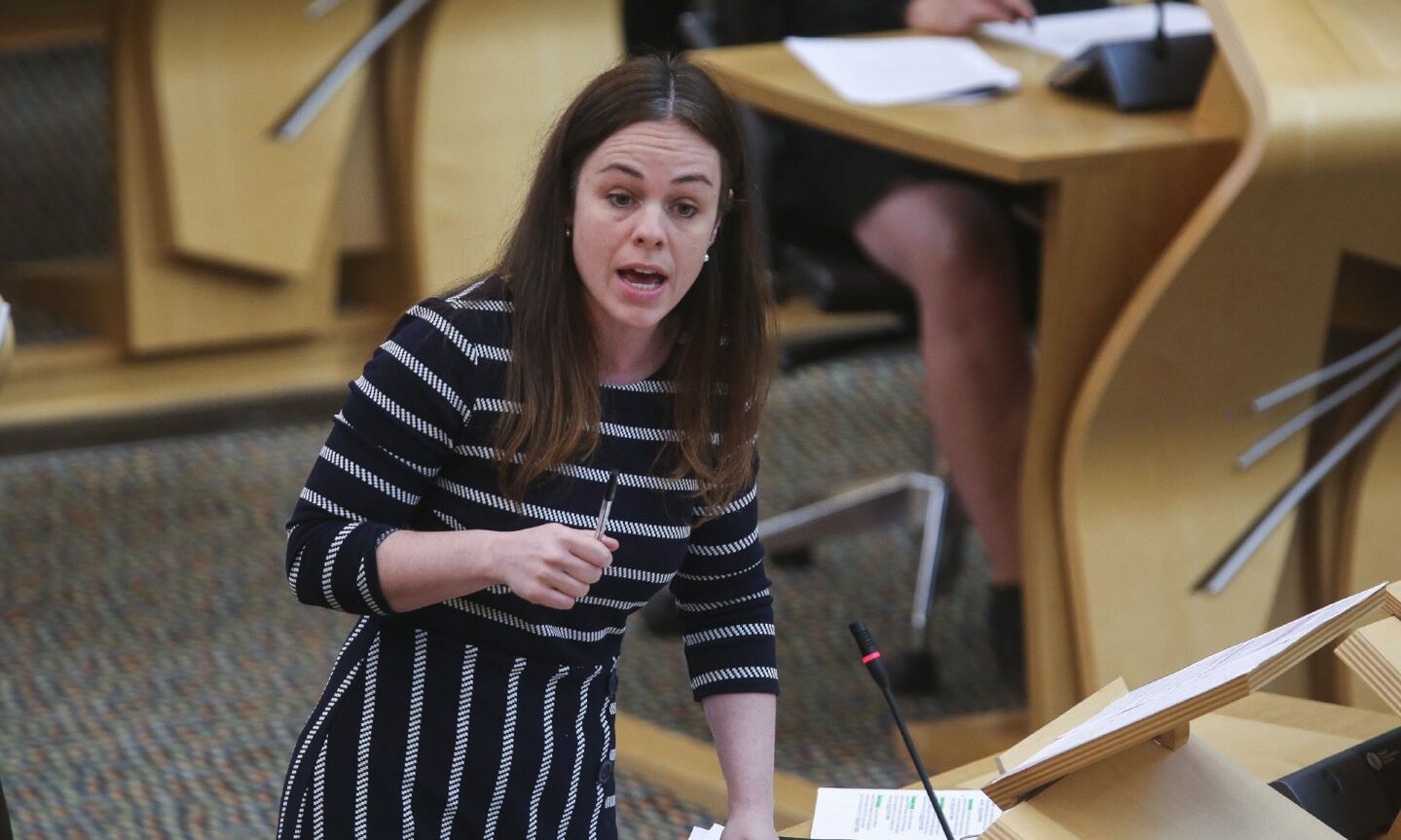Finance chief Kate Forbes set aside £20 million for an independence referendum next year while outlining a swathe of budget freezes that will see local services “cut to the bone”.
Setting out a four-year spending review on Tuesday, the SNP minister blamed the coronavirus pandemic, the war in Ukraine and Westminster.
Experts at the Institute for Fiscal Studies say the plan will mean cuts of around 8% to the police, justice services, universities and rural affairs.
Ms Forbes’ £180 billion plan for day-to-day spending until 2027 is expected to bring a 16% cut to enterprise, tourism and trade promotion.
It will also see the public sector workforce in Scotland slashed to pre-pandemic levels.
Despite the swingeing cost cutting, the government has set aside £20 million for the “delivery of a referendum on independence” in 2023-24.
Opposition parties said Ms Forbes should liberate the funds as they accused the SNP of “warped priorities and disastrous incompetence”.
What is being cut?
The spending review – the first multi-year plan since 2011 – is designed to head off a projected £3.5 billion shortfall by 2027.
While some areas have been prioritised for increases, many others face a frozen budget over the next four years that will see their cash reduce in real terms.
The plan looks particularly tough on local government and policing, with the overall size of the public sector set to be cut significantly.
They are wasting £20 million on a divisive referendum while cutting local services to the bone.
– Scottish Labour finance spokesman Daniel Johnson
Ms Forbes said there had been “years of growth in the public sector, due to Brexit and the pandemic” but there must now be a “reset”.
The finance secretary also plans to sell off public buildings and cull quangos.
Labour described the moves as a “death knell” for local government.
Council tax rises to come?
Central funding for councils will be frozen for the rest of the parliament, raising fears of sharp council tax rises.
A freeze for justice funding means a real-terms cut for community justice, legal aid, the police, prison service, fire service and the prosecution and court services.
It comes despite Justice Secretary Keith Brown pledging in February that ministers would find “new ways” to tackle a record backlog in trials.

The Scottish Police Federation, which represents frontline officers, called the review “absolutely brutal” and predicted a fall in police numbers.
The government’s rail budget will face a real-terms cut despite it taking over the newly-nationalised ScotRail, and an ongoing dispute over train drivers’ pay.
The Scottish Funding Council, which supports colleges and universities, has also had its funding frozen.
Where is the good news?
The Scottish Government pointed to health and welfare spending as areas where the budget has been protected.
Health spending will increase from £17.1 billion this year to £19 billion in 2026-27.
Social security benefits will rise from £3.9 billion to £6.4 billion in a bid to help reduce child poverty.
A total of £73.1 billion will be invested in health and social care, including developing the new National Care Service.
Pinning the blame on Westminster
Ms Forbes said the “stark reality” of the position facing Scotland’s finances is the fault of the UK Government.
She blamed the funding settlement from Westminster on the Conservatives making a “deliberate choice” to sit on their hands.
Ms Forbes said: “Following a real-terms reduction of 5.2% between last year and this, our real terms funding grows by only 2% across the whole four-year period, after accounting for the devolution of social security benefits.
“That is the stark reality. But it is not inevitable – it is the result of a deliberate choice by the UK Government – as they sit on their hands.
“While the Chancellor has provided welcome, if limited support for households, the chill winds of Tory austerity are blowing when it comes to spending on public services.”
‘Staggering incompetence’
Scottish Conservative finance spokeswoman Liz Smith said the £3.5 billion blackhole in Scotland’s public finances is “proof” of the SNP’s mismanagement.
“The world economy is facing extraordinary pressures, but the financial shortfall that has been forecast comes despite the SNP receiving record funding from Westminster this year,” she said.
“The gaping hole between projected public spending and tax revenues in the next few years is the product of staggering incompetence from an SNP government that has no idea how to manage public finances – the ferries fiasco being just one example.
“With hard-pressed families here in Scotland struggling to make ends meet, the SNP must urgently get on top of our economic decline.”
SNP accused of ’empty rhetoric’
Scottish Labour finance spokesman Daniel Johnson claimed the SNP have “nothing to offer expect empty rhetoric and the same old spin”.
“They are slashing support for economic development as our economy falls off a cliff and wasting £20 million on a divisive referendum while cutting local services to the bone,” he said.
“Their economic mismanagement has led to Scots’ wages growing more slowly than the rest of the UK, making this cost of living crisis all the more painful and draining money from public coffers.
“Scots have been paying the price the SNP’s warped priorities and disastrous incompetence for years, and now things are set to get even worse.”


